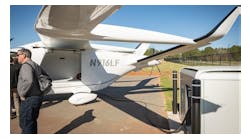SFO Completes Weekend Closures for Runway 28L Rehabilitation Project
The San Francisco International Airport (SFO) reopened Runway 28L at 7 a.m. June 5, completing its schedule of weekend closures a week ahead of the original project plan. The project provided a fresh new asphalt pavement surface for the second-longest runway at SFO, equivalent to paving four lanes of an interstate highway for a distance of over 10 miles. The rehabilitation work included the installation of new long-lasting LED centerline lights, as well as taxiway enhancements to improve operational efficiency. For more information, visit: www.flysfo.com/28L.
“I appreciate the patience of our customers during this very important project,” said Airport Director Ivar C. Satero. “I am also grateful to the entire project team, the FAA, and our airline partners, for their flexibility. By consolidating this work schedule, we can now move into our busy summer schedule without further inconvenience to our travelers.”
The original plan called for a total of nine weekend closures, scheduled to conclude on June 12th. After unfavorable weather conditions forced the cancellation of two planned weekend closures, the Airport, working with airlines and the FAA, consolidated the schedule to protect the peak summer travel schedule, which begins June 8th. This included the addition of a closure over the Memorial Day weekend.
Remaining project work, including taxiway paving, grooving, electrical wiring, and paint striping, will occur during overnight hours through the end of July. This work is not expected to have any operational impact, as it occurs during periods of minimal flight activity.
Runway repaving is necessary every 8-12 years, based on flight activity. Runway 28L was last repaved in 2008. The rehabilitation project provides a new asphalt surface, equivalent to paving four lanes of interstate highway for a length of 10 miles. The project also upgrades runway centerline lights with light-emitting diode (LED) fixtures, which last longer and use less energy. Construction teams are also making improvements to taxiways, resulting in improved operational efficiency.

